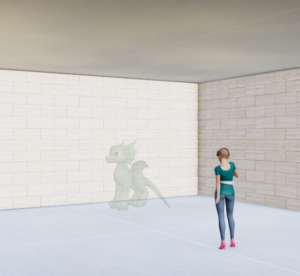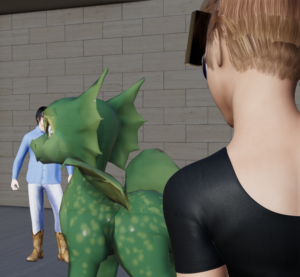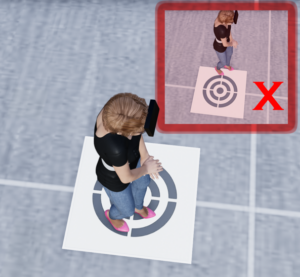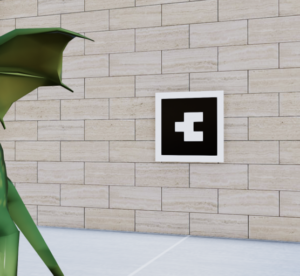Planning A Mixed-Reality Event
Lighting - Balance the brightness of AR versus the room.
Try to keep any bright physical lighting above the level of AR features (eg spot lights). Where possible, illuminate physical walls with diffuse dimmable lights. Reduce the lighting on-site until the AR is clear, while still allowing the user to see walls, obstacles, and other users.
Occlusion - Plan in advance for any objects that might appear between a user and an augmented feature.
AR Objects appear in front of all physical objects. If another user is able to stand between the viewer and the AR object,the AR will appear in front of the user – and the spell of authenticity is broken.
Instead arrange pathways that let users circle AR objects so that other users are behind the AR. Even better, arrange experiences so that users generally remain in a single file and only walls are behind the AR.
Plan in advance for any static room fixtures that might occlude an object. With careful measurement, and good tracking, a matt-black 3D object can be placed at the same location within the 3D scene. It will mimic the real world occlusion and actually adds authenticity to the AR visual. (The human brain often uses occlusion as a method for recognizing the distance and location of physical objects).
Localization - Ensuring that the AR 3D world is properly aligned with the physical world.
AR Experiences have an “Anchor” or (0,0) point that needs to align with a matching point in reality. When an experience is started, the user should be standing on or very close to the anchor.
As they stand on the anchor, users should be encouraged to stand straight and look at a known point in the distance so as to confirm their height and direction of view. At this point they should be properly localized.
It is sometimes possible to use a wall mounted image to anchor augmented reality (technically known as a “fiducial marker”). This has two major advantages – First, the user can be localized from anywhere that has a clear view of the marker, rather than a specific location.
Second, multiple markers can be deployed, so that the user’s position is re-localized when the glasses’ camera observes subsequent markers. For technical reasons this method is not always reliable, though Reality8 have plans to make it significantly more robust.









